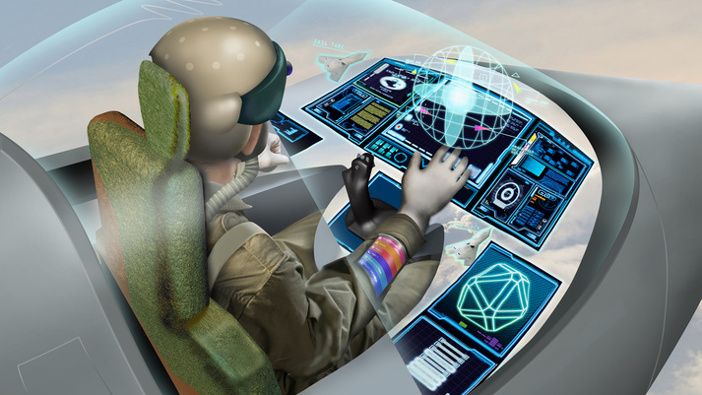BAE Systems’ Human Factors team is working with fighter pilots to better understand and anticipate their needs as the aircraft they fly become more complex. One area the team is focusing on is technologies that enable pilots to control the cockpit in new ways.
Jean Page, head of human factors for military aircraft at BAE Systems, said, “We are looking at what we are calling a wearable cockpit. Here, you remove many of the physical elements of the cockpit, and replace it with a virtual display, projected through the helmet. Essentially, it’s a software-only cockpit that’s upgradeable, adaptable and reconfigurable.”
“In such a world, we need to think about what controls are critical to the pilot and then make them easier to manage. Eye-tracking gives you the option of looking at something to highlight it and then making a gesture to press a button, rather than having a series of physical buttons on the aircraft.”
In terms of cockpit design, understanding where a pilot is looking during a particular phase of a mission is hugely beneficial. For example, enhancing the effectiveness of warning signals so that the pilot is given the right cues and subsequently making it easier for them to react.
“The really clever bit will be that based on where the pilot is looking, we can infer the pilot’s goal and use intelligent systems to support task performance and reduce the pilot’s workload,” added Page.
The eye-tracking approach is being developed alongside the Tempest future jet fighter aircraft concept, which was revealed earlier this year at the 2018 Farnborough International Airshow.





